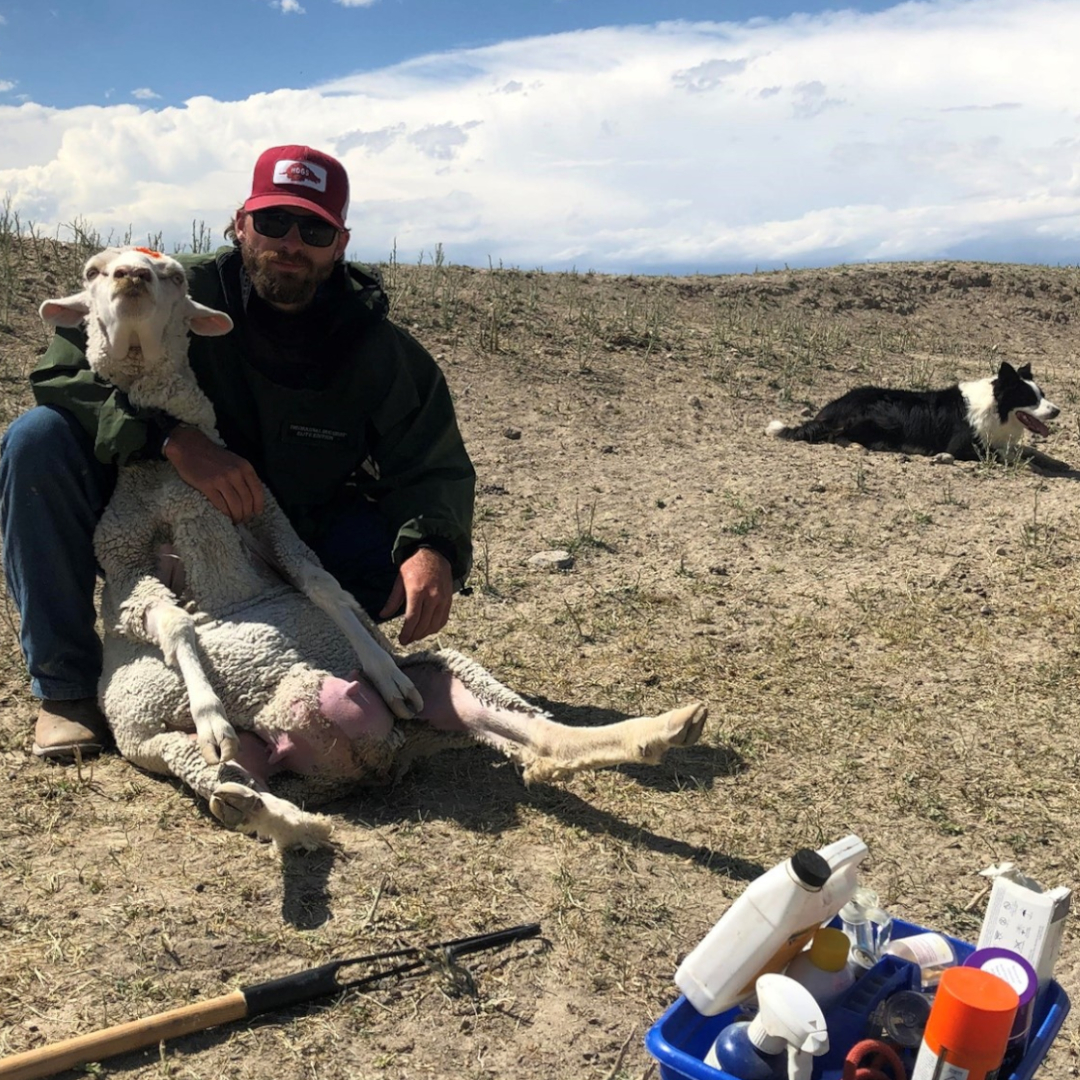Early Weaning, Creep Feeding and Mastitis
#bfrdpwy #aginternship #RightRisk
This week of the growing internship I have continued to implement the previous few weeks [of] work, such as irrigation through gated pipe, management of intensive grazing, feeding and monitoring 30+ bum lambs–lambs without mothers due to death, not being taken in or no milk–and doctoring sick ewes.
Additionally, we have really focused on the initial stages of weaning by continuously adding creep feed to the pasture lambs, as well as the bums we have in the barn. We have also really been keeping an eye out for possible ewes with mastitis, as well as parasites in order to catch it early and give treatment as soon as possible.

Creep feed is an essential step to weaning as early as possible, and the creep feed we have been giving to the lambs is a specific ration made up of 15% soybean, 15% alfalfa, 2.5% molasses, 1.5% mineral and the rest cracked corn. These creep ration[s] [have] been working great and, as the week progressed, the lambs have become quite addicted to it between milk feeding either on pasture or in the barn. As stated earlier, creep feeding is an essential formula to not only develop the rumen but wean (remove from mother and be able to sufficiently feed and take care of itself) quicker and more efficiently, as well as potentially protect the ewe from getting mastitis.
Mastitis generally occurs as the lambs get older and stronger and continually try to get the same if not more milk out of the ewe. As the lamb gets older, the ewe actually starts to produce less milk but the lamb wants to continue to get the same, if not more, which causes wear and tear on the udder. As the udder gets beat up, it [is susceptible to] usually gets a bacterial infection which causes the udder to swell and change color. Mastitis can cause death in sheep and can be contagious if lambs are using an infected udder, then going to other ewes and trying to suck.

Some questions I have [include] wondering about creep feeding [in] is different ways [to] you can ration creep feed in terms of its ingredients and how certain foods, if lowered or raised, might affect the lamb’s production.
Also, what is the preferred weight to wean lambs off of their mother and, if a lamb isn’t weaning properly, what steps should be taken in order to wean? Where are the best places to [locate]place creep feeders in order to get the most out of each feeder, should feeders be dispersed across the pasture to make ewes walk and work for their meals in order to keep them moving and healthy?
Other questions I have in terms of mastitis is what are some ways to prevent mastitis in the first place or maybe what precautionary signs should be noticed if a ewe might develop mastitis? Similarly, what other major sicknesses can arise around the period of weaning and what prevention methods should be taken?
I plan on using what I have learned this past week to educate my friends and family back home. Even though most people I know that work with livestock do not work on ruminates, many have been interested in working with sheep. [The]And the ability to be able to help them understand the fundamentals of sheep herding from a hands-on source is game changer. I also again plan on having my own one day and the progress and information I have gained in these last 4 weeks is astonishing. Understanding and the utilization of creep feed in my own flock one day as will, without a doubt, help me tremendously.
Submitted by: Elijah Richardson
Edits by: GrowinG Internship Team

